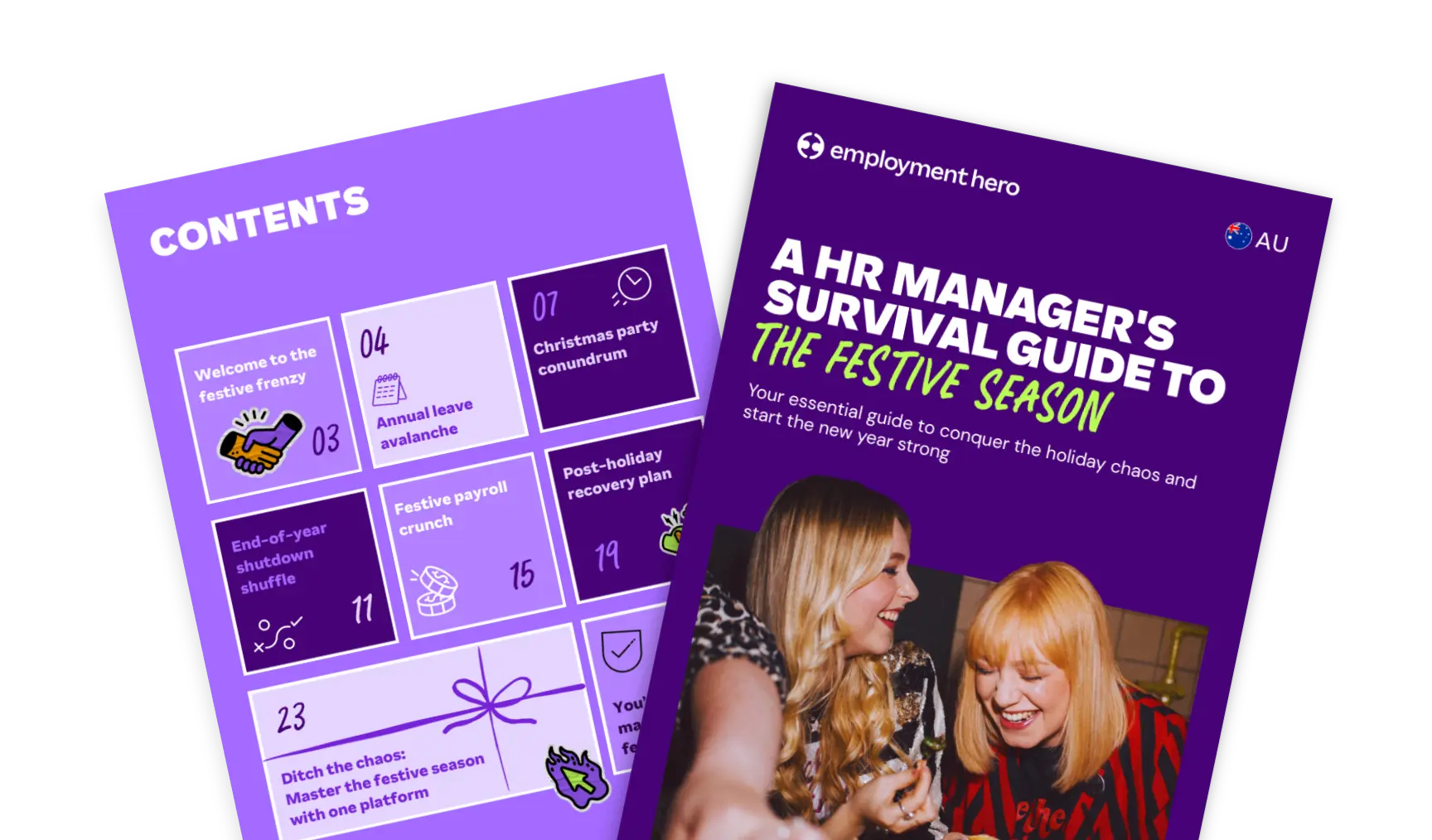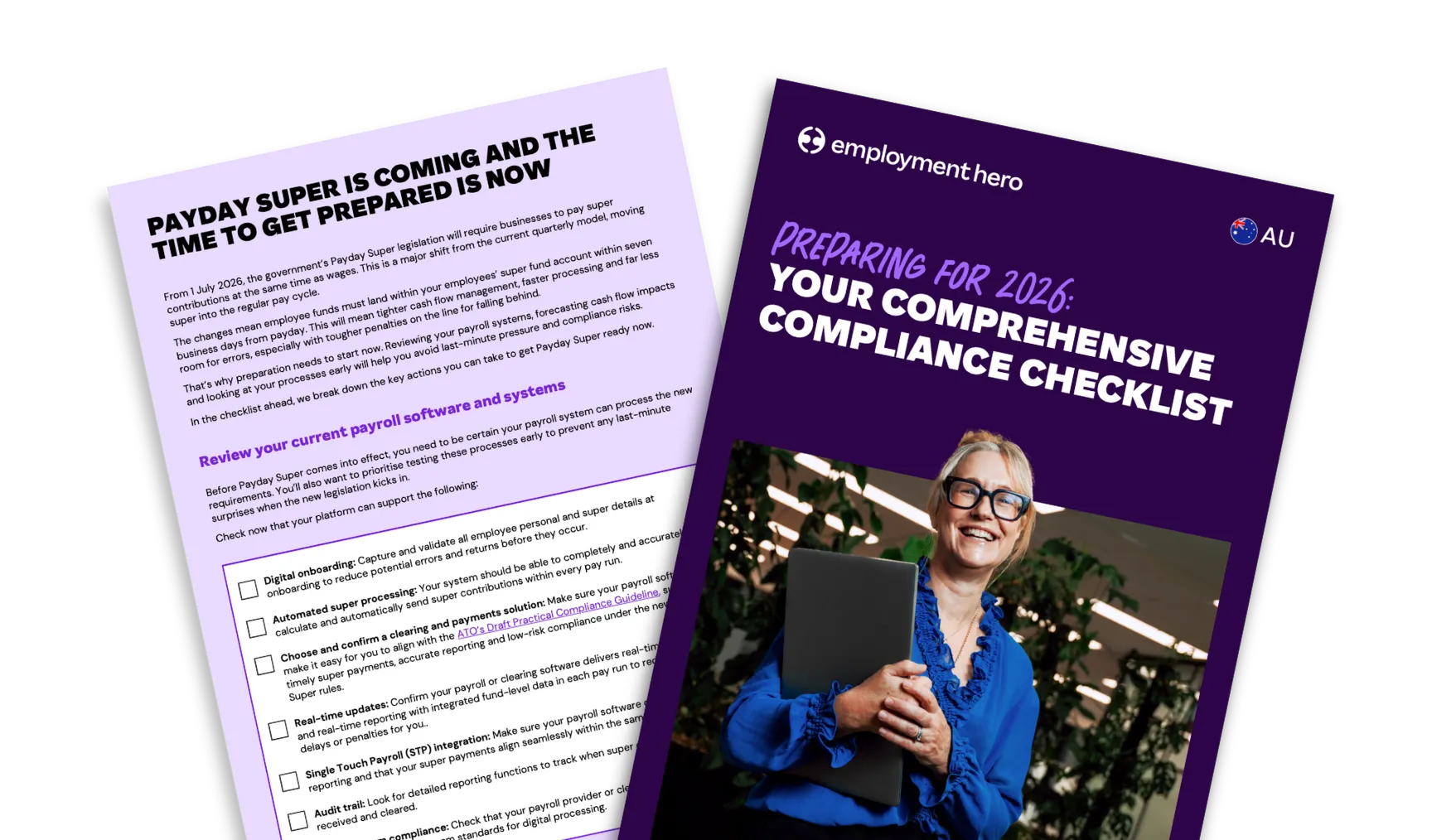Payroll Business Continuity Plan Template
Published
Payroll Business Continuity Plan Template
A disruption to payroll can have serious consequences. That’s why every HR team needs a clear, practical business continuity plan for payroll.
What is in this template?
This template helps you assess the strength of your current payroll processes and build a clear, structured payroll continuity plan. It’s designed to support HR leaders in identifying risks early and putting safeguards in place before issues escalate.
Here’s what’s included:
- A payroll compliance assessment: A structured review to help you identify risks across your payroll system, processes and data, so nothing slips through the cracks.
- Guidance on interpreting your responses: Understand what each result means and where your payroll operations may be exposed to disruption.
- Targeted actions to improve payroll continuity: Practical steps to strengthen your payroll setup and ensure your team is prepared, whether you’re facing a system outage, staff absence or broader disruption.
What is a business continuity plan?
A business continuity plan (BCP) is a documented strategy that outlines how your organisation will maintain essential operations during a disruption, whether that’s a system failure, natural disaster or an unexpected team member absence.
In the context of HR and payroll, it means having structured processes in place to ensure people still get paid accurately and on time, no matter the circumstances.
A well-rounded plan typically covers:
- IT and data recovery
- Communication protocols
- Roles and responsibilities
- Department-level contingencies
While many continuity plans focus on technology or emergency response. Payroll continuity plan requirements are operational, time-sensitive and people-focused.
Why do businesses need a payroll continuity plan?
When a disruption hits, payroll is one of the first areas where problems arise, and mistakes carry real consequences. Delayed wages can trigger compliance issues, create backpay obligations, and erode employee confidence fast.
A continuity plan gives you a structured way to protect this function, so your team isn’t scrambling to fix errors after the fact.
Identifying critical payroll processes
A strong continuity plan starts with knowing which tasks keep everything moving. These core processes must happen on time, every time, for payroll to run smoothly and stay compliant.
To identify them, break your payroll cycle down step by step. Look at:
- How is pay data collected? Is it captured through rostering software, submitted via spreadsheets, or entered manually by managers? The method matters—manual inputs tend to carry more risk and require closer oversight during disruptions.
- Payroll adjustments such as overtime, leave, or termination payments typically pass through several hands. See who reviews and approves such changes. Map out who approves what and consider what happens if they are unavailable.
- Check how pay runs are processed and lodged. This includes calculating wages, applying entitlements, and submitting STP reports to the ATO. Any errors here can result in incorrect payments or compliance breaches.
- Where data is stored and how it’s accessed. If your data lives in local files or siloed systems, it’s more vulnerable during outages. Cloud-based payroll software offers more flexibility and faster recovery in most cases.
- What deadlines must be met? This includes key compliance deadlines such as superannuation payments and preparing your EOFY checklist, which can’t be missed, regardless of internal disruptions.
Once you’ve mapped this out, ask: If one part stopped working, what would the impact be? This will help you prioritise where safeguards are most needed.
Building a robust disaster recovery plan
A disaster recovery plan (DRP) outlines how your team will restore access to essential payroll data and systems after a disruption, whether it’s a tech failure, a cyber incident, or hardware loss.
While you may have an IT-driven disaster recovery plan already in place, it’s essential to consider what specific contingencies are needed for payroll operations. Start by reviewing:
- How can your team access systems? Can your payroll team log in from another device or location if their primary setup is unavailable? Cloud-based payroll software makes this far easier than desktop-only tools.
- Who takes over if someone is unavailable, i.e., if a key team member is out during a critical window, like pay day, do you have someone else trained to step in? Shared access, cross-training, and up-to-date documentation are key.
- What to do if an error or breach occurs? It’s good to Include steps for responding to data loss, incorrect payments, or unauthorised access. This helps your team act quickly and in line with legal obligations.
And finally, checking where your data is backed up? Is there a secure, off-site or cloud-based backup of documents like past pay runs and income statements in your backup scope; they’re often needed to meet compliance or respond to employee requests.
If access is lost, how quickly can you restore what you need? A practical DRP serves as a ready-to-use guide that payroll teams can implement when things go sideways and know precisely how to get everything back on track quickly.
Identifying the best payroll system for your business
Even the most well-documented payroll plan can fall short if the system behind it isn’t reliable. We’ve talked about what happens when access is lost, data is compromised, or key team members are unavailable. The right payroll system can reduce those risks from the outset. Here’s what to look for when assessing one:
- Cloud-based access: Your team should be able to log in securely from anywhere. For example, if your office server goes down or someone’s working offsite, payroll tasks can continue without disruption.
- Automatic data backups: Regular, secure backups of pay runs and employee records mean you’re not relying on a single point of access or storage.
- Local compliance support: Look for platforms that automatically update to reflect changes in Australian tax, super, and reporting requirements. This reduces manual admin and helps avoid compliance errors.
- User permissions and shared access: Multiple team members should be able to access the system with appropriate permissions. This prevents single-person dependency and improves handover during absences. If you use a managed payroll service, check that your provider has safeguards in place—like system redundancy, secure backups, and clear escalation protocols—to support continuity when internal access is limited.
- Simple reporting and audit trails: Clear records of actions—who did what and when—make it easier to track activity and respond to questions from auditors or the ATO.
- Integration with HR and time-tracking tools: A payroll system that connects with your rostering or HR software can reduce double-handling and improve data accuracy.
- AI-powered automation and insights: Automate repetitive tasks like pre-payroll data collection, error detection, and post-payroll processing. Employment Hero payroll software compiles pay runs, flags issues, and handles super, STP, and payslip distribution—so your team can focus on final checks, not chasing paperwork.
- Reliable support: Ensure access to customer support, especially during pay run periods. This is crucial because a delay in resolving issues—no matter how small—can result in late payments, reporting failures, or unnecessary stress on your team.
The right setup gives your team fewer manual steps to manage, better visibility across each stage, and a faster path to recovery when things don’t go to plan.
How to ensure ongoing quality assurance?
As your team evolves, systems change, and compliance requirements shift, even the most solid processes can lose their edge. Without regular check-ins, minor oversights can turn into costly errors e.g. missed pay runs, inaccurate reporting, or compliance gaps that only surface under pressure.
Here’s how to build that into your ongoing workflow:
- Schedule regular process reviews: Set a time each quarter to walk through your payroll workflow. What’s slowed down? Where are errors creeping in? This helps catch issues before they become big problems.
- Provide refresher training for payroll staff: Training isn’t just for new hires. Refresher sessions help your team stay up to date with compliance updates, system features, and any internal changes.
- Keep internal documentation up to date: If your payroll guide still refers to steps or tools you’ve moved away from, it’s a liability. Update it after any significant process or system change—this keeps handovers smooth and reduces reliance on single team members.
- Run internal audits or spot checks: Build time for occasional audits or variance checks. These don’t have to be formal or time-consuming and can simply highlight trends, inconsistencies, or overlooked steps.
- Track feedback from employees and managers: Complaints about payslips, super, or missed reimbursements often reveal deeper process issues. Use this input to inform what needs to be fixed or clarified.
- Assign ownership: Quality assurance isn’t a one-person job, but someone should be responsible for overseeing the review cycle. This ensures follow-ups aren’t missed and improvements are actioned.
By keeping your payroll operations under regular review, you protect against minor errors becoming significant setbacks, allowing your team to become more resilient.
Want to make sure payroll keeps running—no matter what comes your way? Download the free template to get started—or, if you’d like help streamlining your payroll operations, request a demo of our payroll software. Our team is here to walk you through how it works and help you find the right setup for your business.
Before you download the checklist, we just need some details:
Related Resources
-
 Read more: HR Managers: Don’t just survive the festive season, master it
Read more: HR Managers: Don’t just survive the festive season, master itHR Managers: Don’t just survive the festive season, master it
Make year-end easier: manage leave, payroll, parties and shutdowns with confidence. Get practical tips for Australian SMEs. Download the free…
-
 Read more: Preparing for 2026: Your Compliance Checklist
Read more: Preparing for 2026: Your Compliance ChecklistPreparing for 2026: Your Compliance Checklist
Get your business ready for the 1 July 2026 changes. See practical steps for Payday Super, cash flow planning and…
-
 Read more: Monthly business budget template for employers
Read more: Monthly business budget template for employersMonthly business budget template for employers
Plan your monthly income and expenses with our free monthly business budget template. Download today to track cash flow and…























